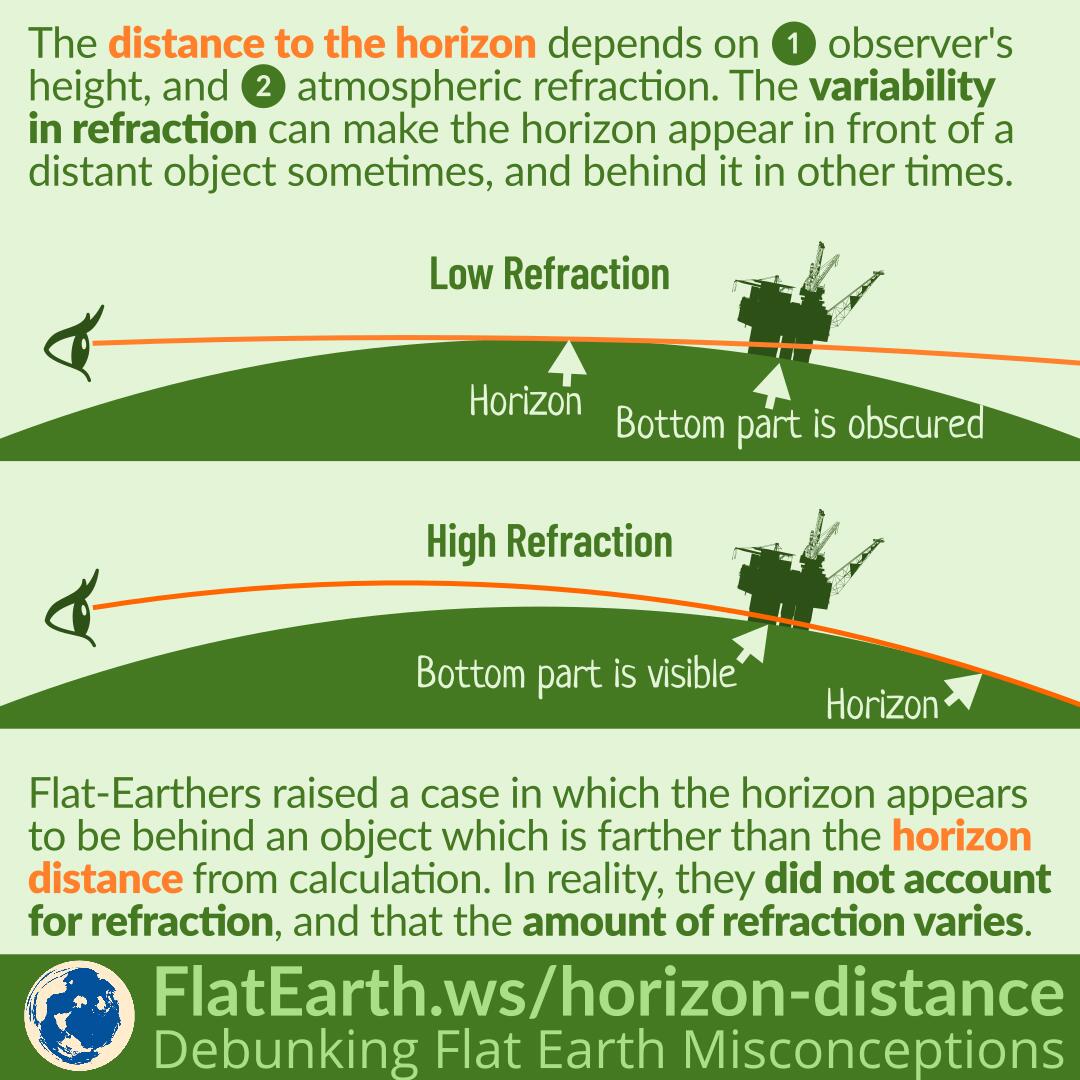An atmospheric duct is a horizontal layer in the lower atmosphere in which a thermal inversion causes light rays to be trapped and continuously guided near Earth’s surface. They tend to follow Earth’s curvature without escaping to space.
Water heats up slower than air and will be cooler than air most of the time. In turn, the colder water cools down the layer of air just above it, creating a thermal inversion that can form a duct.
It is the reason flat-Earthers like to perform observations from very close to the water’s surface. It will be easier for light to bend, revealing objects that are geometrically behind the curvature. Then, they will incorrectly attribute it to “the lack of curvature.”



